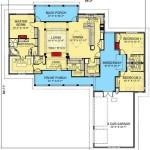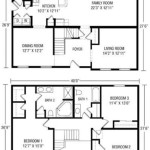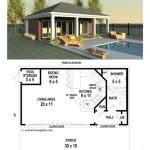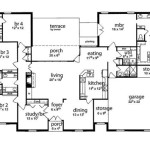How to Craft a House Plan Step By Step: A Guide to Blueprints
Creating a house plan is a crucial step in the home building process. It involves meticulously outlining the layout, dimensions, and features of your future home. This process, often referred to as drafting blueprints, requires careful planning and attention to detail. This article provides a step-by-step guide to crafting a house plan, empowering you to bring your dream home to life.
1. Define Your Needs and Preferences
Before diving into the design process, it's essential to define your requirements and preferences. Consider the following aspects:
- Number of bedrooms and bathrooms: Determine the ideal number of bedrooms and bathrooms to accommodate your family's needs. Consider future growth and potential guests.
- Living space: Decide on the size and layout of your living areas, such as the living room, dining room, and kitchen. Think about your lifestyle and how you envision using these spaces.
- Exterior style: Choose an architectural style that reflects your taste and complements the surrounding neighborhood. Popular styles include ranch, colonial, modern, and traditional.
- Special features: Identify any specific features you desire, such as a fireplace, home office, or walk-in closets. Consider your budget and practicality when adding these features.
2. Sketch Initial Floor Plans
Once you have a clear understanding of your needs, begin sketching initial floor plans. Start by drawing the basic layout of the house, including the placement of rooms and major features. Use graph paper or a dedicated floor plan software for accurate representation.
Here are some tips for creating rough sketches:
- Consider the flow: Ensure a smooth flow between rooms by strategically placing doorways and hallways. Think about how you will navigate the house.
- Maximize natural light: Maximize natural light by placing windows strategically to create a bright and airy atmosphere.
- Utilize space efficiently: Avoid wasted space by carefully planning the placement of furniture and appliances.
- Don't forget exterior details: Include porches, patios, and decks in your sketches, considering their size and placement.
3. Draft Detailed Blueprints
With your initial sketches finalized, you can begin the process of drafting detailed blueprints using specialized software or by seeking professional assistance. These blueprints will serve as the foundation for construction and incorporate all necessary information:
- Floor plans: Detailed floor plans with accurate room dimensions, window and door placements, and furniture layouts.
- Elevations: Drawings of the exterior facades of the house, including roofing details and exterior finishes.
- Sections: Cross-sections of the house that illustrate the building materials and construction methods.
- Details: Close-up views of specific features, such as window treatments, stair layouts, or fireplace designs.
- Specifications: A detailed list of materials, finishes, and construction techniques.
4. Review and Refine Your Plan
After drafting the blueprints, it's crucial to review and refine them to ensure accuracy and meet your specific needs. Seek feedback from potential builders, architects, and other professionals to ensure your plans are practical and feasible.
Consider the following areas during the review process:
- Building codes and regulations: Ensure your plans comply with local building codes and regulations to avoid delays and potential issues during construction.
- Budget considerations: Review your budget and make any necessary adjustments to ensure your plan is financially viable. Explore cost-effective alternatives for materials and construction techniques if needed.
- Accessibility: Consider the accessibility of your home for people with disabilities. Ensure doorways, hallways, and bathrooms are designed to meet accessibility standards.
- Sustainability: Involve eco-friendly design features and materials in your plan to create a sustainable and energy-efficient home.
5. Obtain Necessary Approvals
Once the blueprints are finalized and reviewed, you need to obtain necessary approvals from local authorities. This typically involves submitting the plans to the building department for review and inspection.
Ensure the following steps are taken:
- Obtain permits: Apply for the required construction permits from the local building department. These permits ensure that your plans meet local codes and standards.
- Inspections: Schedule inspections with the building department at different stages of construction to ensure your work complies with the approved plans and codes.
Creating a house plan is a collaborative process that requires careful planning, attention to detail, and a clear understanding of your needs and preferences. By following these steps, you can transform your dream home into a tangible blueprint, paving the way for a successful construction project.

How To Draw Blueprints For A House With Pictures Wikihow

How To Manually Draft A Basic Floor Plan 11 Steps Instructables

How To Draw A Floor Plan Live Home 3d

How To Read Blueprints

How To Draw A Floor Plan Live Home 3d

Create House Plans All In One Roomsketcher

Free Simple Two Story House Plans Online Edit Available

How To Draw A Floor Plan Live Home 3d

Create House Plans All In One Roomsketcher

How To Draw Blueprints For A House With Pictures Wikihow
Related Posts








